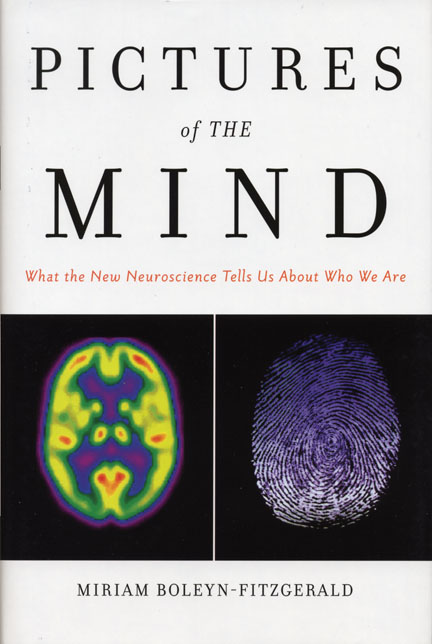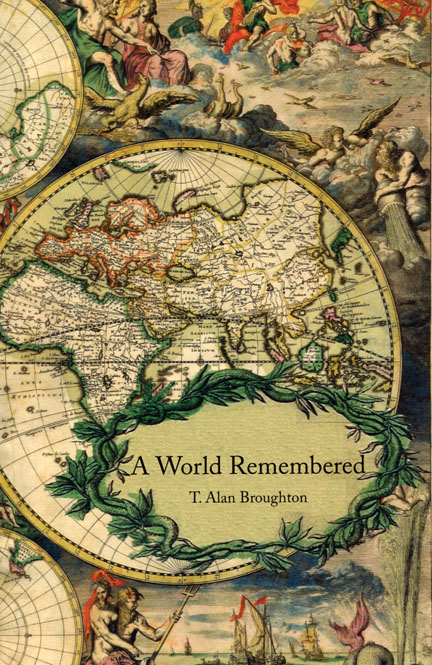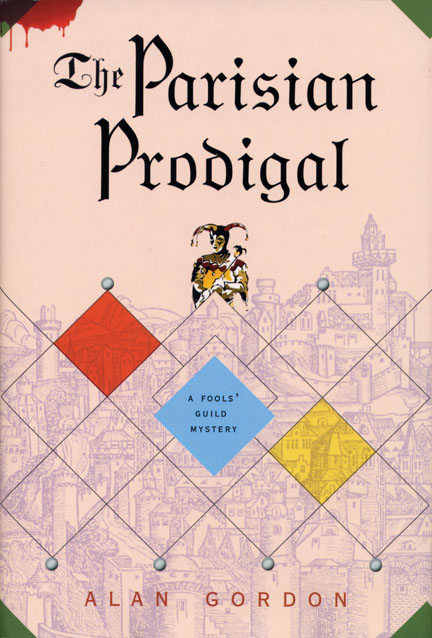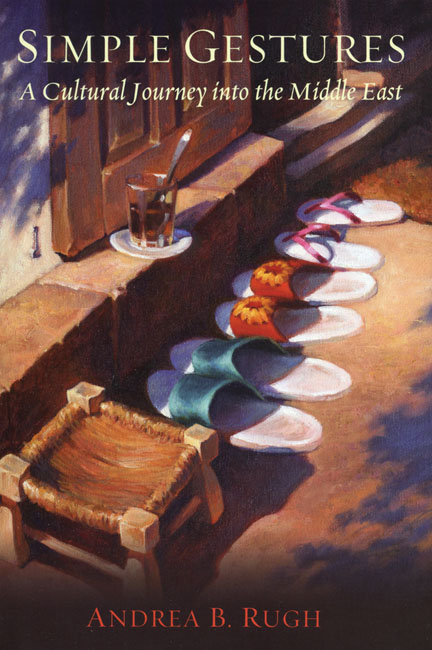How College Classmates Helped Rebuild War-torn Europe
Alzina Stone Dale ’52
When the Post War World Was New,
(Tate Publishing, 2009)
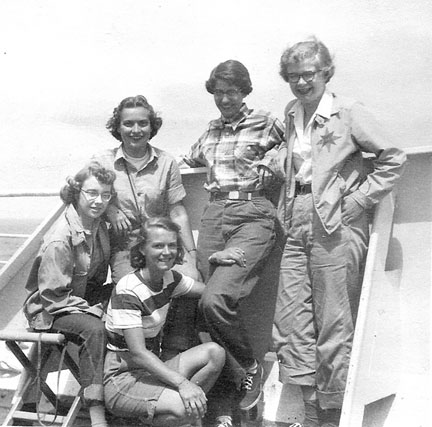
Alzina “Maryal” Stone Dale (far left) and Swarthmore classmates (counterclockwise from front) Jenny (Mary) Lee Suiter, Elspeth Monro Reagan, Nell Goldstein Stern, and Amy Blatchford Hecht on the deck of the Arosa Kulm, a converted troop ship, en route to Europe and the work camps in June 1952.
World War II had recently ended, and Maryal Stone (known also by the pen name Alzina Stone Dale) had her Swarthmore diploma in hand. Unsure of what her next step would be, the Chicago native volunteered to go overseas with the Quakers and help rebuild war-torn Europe. After four days of orientation at the American Friends Service Committee’s (AFSC) Pendle Hill Conference Center, Stone and four classmates—Amy Blatchford Hecht, Elspeth Monro Reagan, Jenny (Mary) Lee Suiter, and Nell Goldstein Stern—boarded the Arosa Kulm, a converted troop ship. Classmates Esther Fiske Doherty and Nancy Cliffe Vernon also volunteered at work camps that summer, and Dale met them later in Switzerland to sightsee before heading home.
Their adventure began in Philadelphia on June 18, 1952, with the women lugging rucksacks filled with all they would need for the next three months. Once in Europe, they went to Paris, where the AFSC’s office assigned them to various work camps. Dale traveled north by train—her destination a Finnish camp near Rovaniemi. On the final leg of her trip, she was bused to the edge of a wooded area in Paivojoki, picked up by a truck driver, and driven on a dirt road to the camp, where she traversed a plank to reach the first building. This was home for the next six weeks.
Dale was inspired to write When the Post War World Was New while attending her class’s 45th reunion. Other book projects have included biographies of G.K. Chesterton and Dorothy L. Sayers. She also co-authored a series of mystery guidebooks that trace the steps of characters such as Nero Wolfe in New York and Lord Peter Wimsey in London.
Dale had detailed diaries from the summer of 1952 and letters home that her parents had saved, but she also wanted to incorporate the memories of her traveling companions. In response to her requests for details, a plethora of shared memories, letters, and photographs flowed into the Dale household.
Last fall—more than a half-century after the European adventure—the tale was ready to be shared.
Why write this story 50 years later?
When I talked my friends into coming to our reunion in 1997, I found that the summer of 1952 had been important to many of them—teaching them what it meant to be an American and how to cope with strange conditions. When I saw how delighted our other classmates were with our stories, I had a lightning-bolt moment—this could be a book! Back home that summer, I began gathering letters, cards, and photos from my traveling companions.
Describe your six weeks at the work camp in northern Finland.
Primitive but fun. The site was previously a lumber camp with two ramshackle buildings. One was a dining room and kitchen for the camp; the other was where the girls slept [The boys slept in tents.]. The whole camp sat around in the evenings to read, talk, or write. Only one other person spoke English, so communication was difficult. We helped 26 families clear trees and boulders from farmland the Finnish government had given to them at the end of the war.
What impact did the work camp and backpacking through Europe have on you?
I learned I could adapt to the primitive conditions. When I started out at the Pendle Hill training center, I could hardly lift my rucksack, but by the time we were touring Europe, I was easily swinging it up onto my shoulders. Traveling through Europe, I was surprised that some Europeans disapproved of Americans and discovered that the some work camp members preferred not to be identified as Americans.
Your writing became softer and more upbeat at the end of your summer-long sojourn. Why was England such a different experience for you?
England felt more like home because I could speak the language. It was part of my heritage, and I had studied English history and literature in my honors classes. I also had classmate Kippie deKiewiet Hemphill (who was taking graduate history classes at the University of London) to bum around with— just about every evening we indulged ourselves with inexpensive seats at the theater—and fulfilled a lifelong dream when I saw Queen Elizabeth II [who recently had been crowned] ride by in her horse-drawn carriage.
What has been the proudest moment of your career?
When I opened a letter from a publisher saying they wanted to publish my book about Dorothy L. Sayers. Even before going to England, I was very fond of Sayers’s mysteries, having found them in a Swarthmore neighborhood bookstore. Years later, while home with my three children. I wrote Maker and Craftsman: The Story of Dorothy L. Sayers.
What is your guilty pleasure?
Reading books. If given the chance, I would do just that and write letters. Here in Chicago, I’m known for writing letters to editors. Perhaps my next book will be a compilation of those letters.
—Susan Cousins Breen
MORE BOOKS
Morten Beyer ’43, Flying Higher: A True Story, Trafford Publishing, 2009. The author recounts his adventures during a 60-year career in commercial aviation—from the Pan Am Clipper Ships to the supersonic jet era. As head of numerous airlines, he inaugurated services including air coach, in-flight drinks, high-density seating, and streamlined labor practices.
Miriam Boleyn-Fitzgerald ’93, Pictures of the Mind: What the New Neuroscience Tells Us About Who We Are, FT Press, 2010. This book portrays why scientists are increasingly excited about the brain’s abilities to keep growing, learning, changing, and healing, presenting the images that are revolutionizing neuroscience and offering a personal tour of the frontiers of brain research.
T. Alan Broughton ’62, A World Remembered, Carnegie Mellon University Press, 2010. This seventh book of poems by the author is described as offering “fragments of a larger narrative, whether they come from the life of the writer or characters imagined, shaped so that they can be whole in themselves. It is the author’s hope that they combine to form a “community of momentary understandings, even if the world remembered is only what we think we know.”
Alan Gordon ’81, The Parisian Prodigal, Minotaur Books, 2010. Set at the start of the 13th century, this novel tells the story of Theo, a jester and spy, who—with his wife, baby daughter, and preteen female apprentice—belongs to the Fools’ Guild, an organization denounced by the Pope. Although giving the appearance of being entertainers, they are working behind the scenes to stabilize order in a turbulent Europe.
Jay R. Lund, Ellen Hanak ’79, William E. Fleenor, William A. Bennett, Richard E. Howitt, Jeffrey F. Mount, and Peter B. Moyle, Comparing Futures for the Sacramento-San Joaquin Delta, Freshwater Ecology Series, University of California Press, 2010. Based on the most recent data, a team of independent water experts evaluates proposed solutions to problems facing the hub of California’s water system.
Melanie Kloetzel ’93 and Carolyn Pavlik (editors), Site Dance: Choreographers and the Lure of Alternative Spaces, University Press of Florida, 2009. This first anthology examines site-specific dance. The editors explore the work that choreographers create for nontraditional performance spaces and the thinking behind their creative choices.
David Kresh ’61 D, Turn Off or Use the Opener, Dog Ear Publishing, 2007. This collection of poems, some of which appeared in a wide variety of publications, was published posthumously. Exploring a dangerous world, using language that is never as simple as it seems, the poet mapped the coordinates of a reality that seems to lie slightly beyond our own; at once both magical and familiar and filled with moments of stark, heartbreaking beauty.
Peter Napier ’58, Checklists for Success: The Ultimate Handbook for World Operations Management, XLibris 2010. The author describes his career as a world-class international manufacturing operations executive, using examples—from aquisitions to vendor surveys—to show the benefits of keeping checklists for planning and directing new operations activities.
Li Zehou, The Chinese Aesthetic Tradition, translated by Maija Bell Samei ’86, University of Hawaii Press, 2010. Besides its value in introducing the philosophy of one of contemporary China’s foremost thinkers, a translation of this work fills an important gap in the literature on Chinese aesthetics in English, presenting Li’s synthesis of the whole trajectory of Chinese aesthetic thought, from earliest times to the beginning of the modern period.
Andrea Rugh ’57, Simple Gestures: A Cultural Journey into the Middle East, Potomac Books, 2009. This book describes one American woman’s efforts over the course of 40 years—as the wife of a diplomat who served as ambassador in two countries—to better understand the people and customs in countries where she lived and worked: Lebanon, Syria, Egypt, Saudi Arabia, Yemen, the United Arab Emirates, Pakistan, and Afghanistan.
Ralph Lee Smith ’51 and Madeleine McNeil (arrangers), Folk Songs of Old Virginia, Roots and Branches Music, 2009. This book presents some little-known songs and some little-known tunes for better-known songs, from English Folk Songs from the Southern Appalachians, and makes them available to dulcimer players.
Richard Wolfson ’69 and Andrew Rex, Essential College Physics, Volumes 1 and 2, Pearson Addison-Wesley, 2010. Companions to Wolfson’s Essential University Physics (2007), these volumes offer a simpler and shorter approach to college textbooks at half the price of traditional physics texts—with a text that is focused, concise, and nonintimidating, with well-coordinated explanations, art, worked examples, and end-of-chapter problems.
 Email This Page
Email This Page